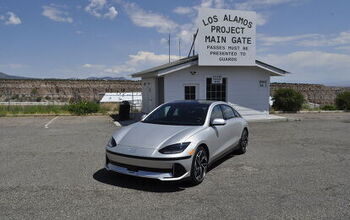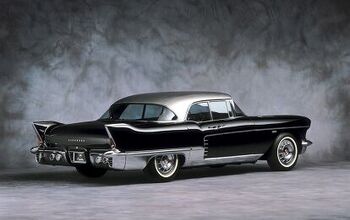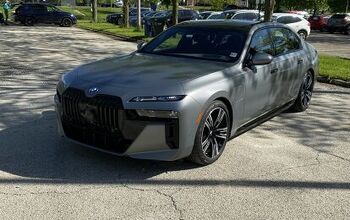Lyft IPO Makes a Splash, Followed By a Flop

Despite playing host to what everyone presumed would be a very hot property, Lyft’s IPO hasn’t panned out as expected. While the company’s Friday stock debut was strong, April 1st was less promising, with Lyft’s share price slipping by nearly 12 percent in a single day. It’s now well beneath the target price, casting doubts about the financial sustainability of mobility firms.
It’s a complicated issue. Lyft was valued at more than $22 billion when it went public last week, but investors are concerned with the company’s inability to turn a profit. Last year, the ride-hailing giant posted a net loss of nearly $1 billion. With Uber likely to announce its own IPO soon (and likely face similar headwinds), many are concerned.
While the issue of profitability is an important one, it’s not the only reason the company is having trouble trading. Ride-hailing firms are no longer novel and people are starting to point out the downsides. Environmentalists and city planners are becoming increasingly concerned that the sudden influx of Uber and Lyft vehicles in urban areas have contributed to traffic congestion and pollution in a big way. Studies also indicate that these companies have syphoned many customers away from public transit.
However, that might also be ride-hailing firms’ biggest asset. Both Lyft and Uber are expanding rapidly and seeing more riders every single day. And all that growth has turned out to be expensive. Neither company has a clear path toward becoming profitable. While both have suggested deploying autonomous vehicles, reducing the need for independent contractors and their cars, development of the technology has proven extremely costly and not nearly as simple or swift as the automotive industry once predicted. As a result, public trust that AVs will be dependable, safe, and useful hasn’t improved much.
In the lead-up to Lyft’s IPO, many claimed companies of its ilk are severely overvalued, which isn’t terribly uncommon in the tech sector. But going public changed things. Rather than leaning on venture capital and positive press, Lyft is going to have to start appeasing its shareholders — which opens up a pandora’s box of issues. They’re going to be less willing to support the company if it continues losing money and, based on its long-term aspirations, losing money is likely to be par for the course for a while longer.
CNBC cited Michael Ward, an analyst at Seaport Global Securities, initiating coverage of the stock with a sell rating and a 12-month price target of just $42 a share. Lyft priced its IPO on Thursday evening at $72. Ward’s price target suggests a 39.1 percent reduction from Monday’s close of $69.
“In order to justify its current market valuation, investors need to take a big leap of faith that the millennials and later generations will forego ownership of a car and opt instead for reliance on a ridesharing service,” he said, adding that his personal belief is that people will continue to own cars and lean upon ride-sharing services as a “convenient supplement.”
“While we believe the ridesharing market will continue to grow and expect Lyft to be a prime competitor, in our view, current valuations reflect an overly optimistic view of consumer behavior in the U.S.,” Ward concluded.
Nobody really knows if Uber and Lyft will fizzle out, replace taxis entirely, or become so prevalent that they effectively replace public and personal transportation (doubtful). But many agree that both will have to adjust their pricing to become profitable — an interesting situation, considering their competitive cost and convenience are what gave them an edge over cabs, while helping the disruptive startups lure passengers away from trains and buses.
[Image: Jonathan Weiss/Shutterstock]

A staunch consumer advocate tracking industry trends and regulation. Before joining TTAC, Matt spent a decade working for marketing and research firms based in NYC. Clients included several of the world’s largest automakers, global tire brands, and aftermarket part suppliers. Dissatisfied with the corporate world and resentful of having to wear suits everyday, he pivoted to writing about cars. Since then, that man has become an ardent supporter of the right-to-repair movement, been interviewed on the auto industry by national radio broadcasts, driven more rental cars than anyone ever should, participated in amateur rallying events, and received the requisite minimum training as sanctioned by the SCCA. Handy with a wrench, Matt grew up surrounded by Detroit auto workers and managed to get a pizza delivery job before he was legally eligible. He later found himself driving box trucks through Manhattan, guaranteeing future sympathy for actual truckers. He continues to conduct research pertaining to the automotive sector as an independent contractor and has since moved back to his native Michigan, closer to where the cars are born. A contrarian, Matt claims to prefer understeer — stating that front and all-wheel drive vehicles cater best to his driving style.
More by Matt Posky
Latest Car Reviews
Read moreLatest Product Reviews
Read moreRecent Comments
- Lou_BC Well, I'd be impressed if this was in a ZR2. LOL
- Lou_BC This is my shocked face 😲 Hope formatting doesn't fook this up LOL
- Lou_BC Junior? Would that be a Beta Romeo?
- Lou_BC Gotta fix that formatting problem. What a pile of bullsh!t. Are longer posts costing TTAC money? FOOK
- Lou_BC 1.Honda: 6,334,825 vehicles potentially affected2.Ford: 6,152,6143.Kia America: 3,110,4474.Chrysler: 2,732,3985.General Motors: 2,021,0336.Nissan North America: 1,804,4437.Mercedes-Benz USA: 478,1738.Volkswagen Group of America: 453,7639.BMW of North America: 340,24910.Daimler Trucks North America: 261,959


































Comments
Join the conversation
The Fed just needs to transfer some mroe loot for it's constituency, in order to keep Hype and Theft alive.
Waymo CEO showing off their self-driving technology on "Countdown To The Closing Bell" with Liz Clayman tomorrow at 3 pm ET. Of course, it will be on their closed loop in Phoenix, so I'm not expecting anything really dramatic - perhaps they stage a kid kicking their ball across the road or something like that. She's done a number of interviews with Dr. Musk, wonder why with the announcement of the hardware 3.0 with their new in-house chip that they aren't ready to go and tout it to the public. Also awaiting Tesla Q1 2019 sales, the estimates are all over the place.